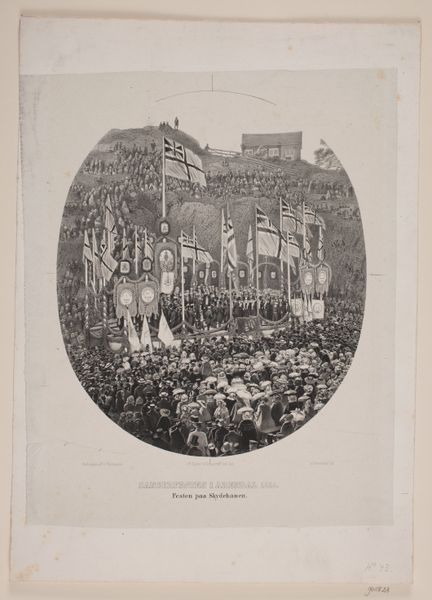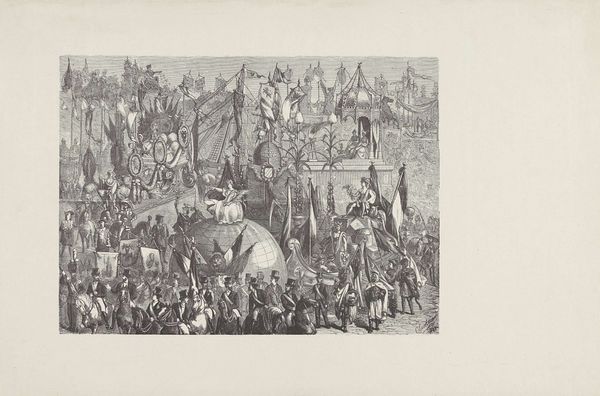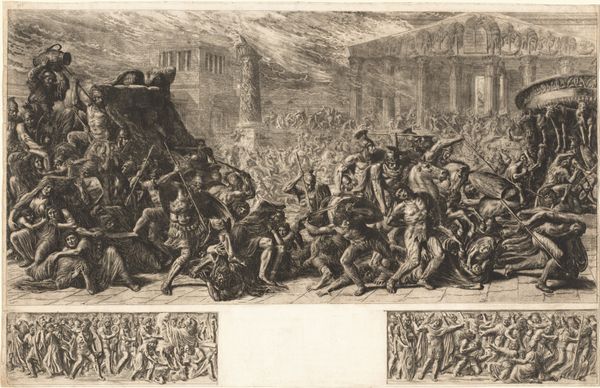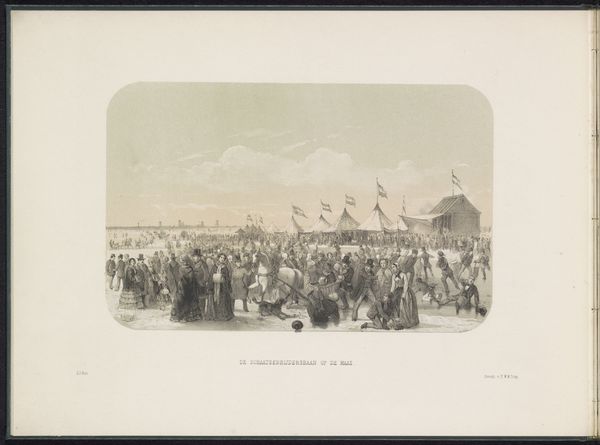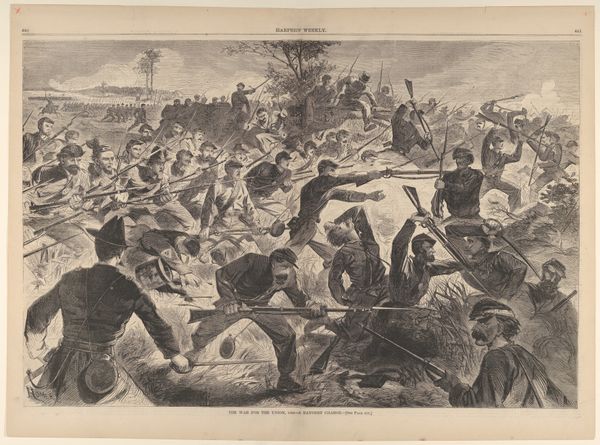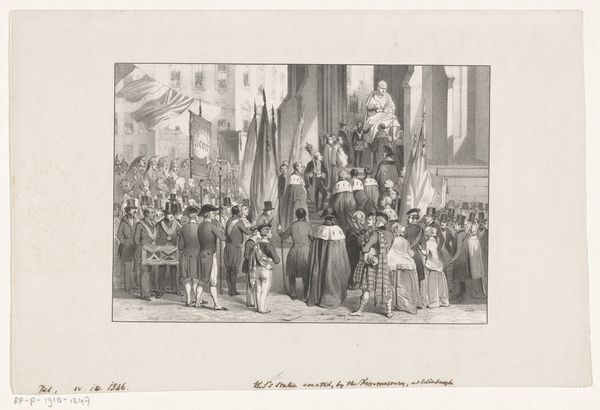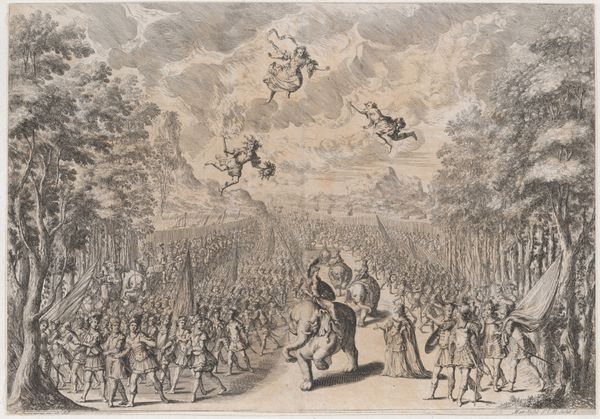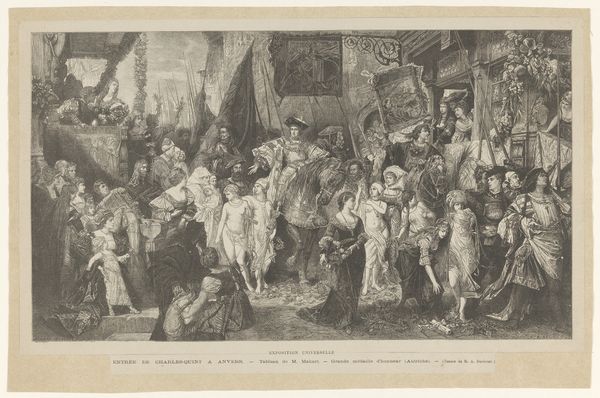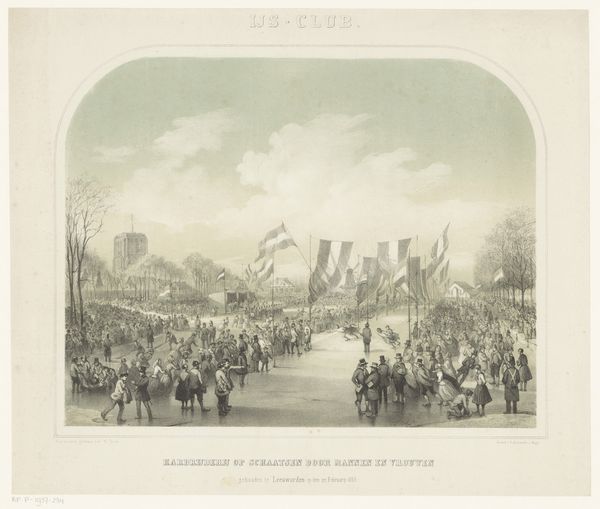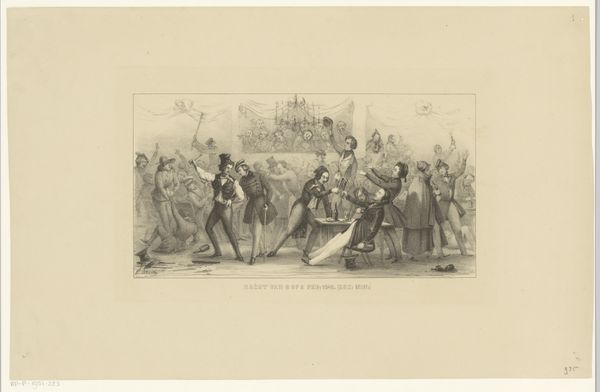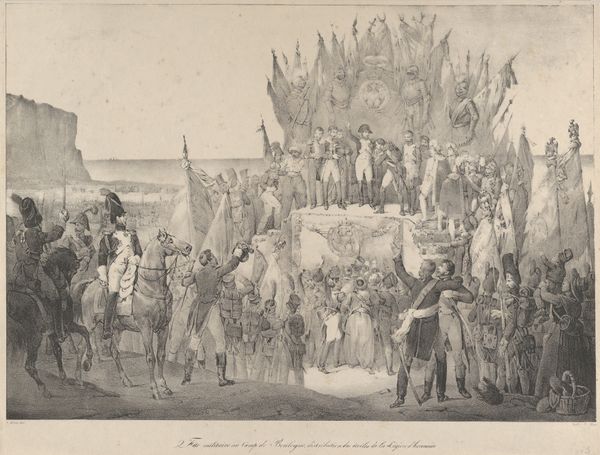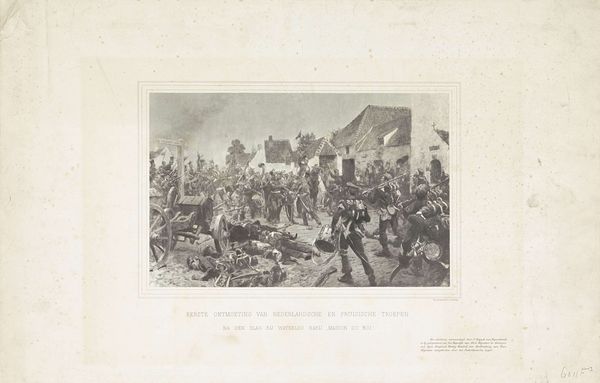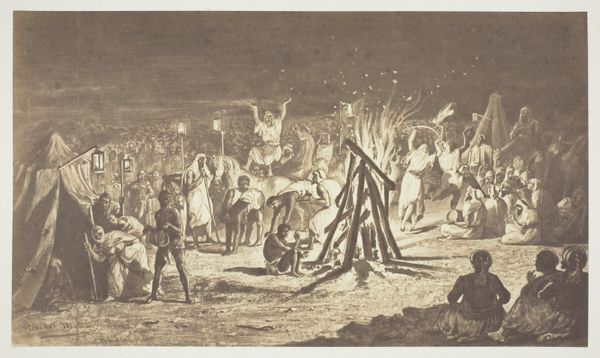
Indian Sun Dance–Young Bucks Proving Their Endurance by Self-Torture ("Harper's Weekly," Vol. XIX, pp. 8-9) 1875
0:00
0:00
print, engraving
#
narrative-art
#
ink painting
# print
#
pencil sketch
#
engraving
Dimensions: Sheet: 16 1/8 × 21 13/16 in. (41 × 55.4 cm)
Copyright: Public Domain
Curator: Jules Tavernier’s "Indian Sun Dance\u2013Young Bucks Proving Their Endurance by Self-Torture" appeared as an engraving in Harper's Weekly in 1875. It depicts a Sun Dance ceremony, likely among the Plains Indians. Editor: My first impression? Intense. The scene feels crowded, almost claustrophobic, yet all the lines and details guide you toward that central figure dancing. There's a sense of drama, but also a touch of… distance. Curator: Indeed. It’s an outsider's view, filtered through the lens of 19th-century illustration. Tavernier wasn't just recording what he saw; he was shaping a narrative for a specific audience—urban Americans, largely unfamiliar with, and often prejudiced against, Indigenous cultures. It's an example of how art becomes a political instrument. Editor: That distance makes me uneasy. All those faces blurred into a mass… does it honor individuality, or flatten it? The dancers' apparent suffering becomes a spectacle, printed in a popular periodical for consumption. It begs the question: what does observing this scene *do* to the viewer? Does it inform, or simply reinforce existing power structures? Curator: Precisely. Tavernier offers detail, yes, but framed within the prevailing attitudes of his time. Note how the composition itself places the viewer outside the circle, a passive observer. Even the self-torture element—which, to be clear, was part of a deeply spiritual ritual—is presented as a form of barbaric spectacle. Editor: It's unsettling. The black and white medium itself strips away any vibrant color, maybe contributing to this impression. Looking at it now, over a century later, I feel both captivated and implicated. I wonder about the nuances lost and how the subjects might have reacted to such a rendition of a key cultural act? Curator: It prompts vital reflection. We, too, bring our own cultural assumptions. These older prints can offer historical records of cultural events but we need to acknowledge and discuss the biases baked into their creation and circulation. It shows just how powerful an image can be, even one seemingly 'objective'. Editor: Exactly. Seeing through those historical biases opens our eyes not only to the past but to the ongoing complexities of representation itself. Thanks for that insight.
Comments
No comments
Be the first to comment and join the conversation on the ultimate creative platform.
